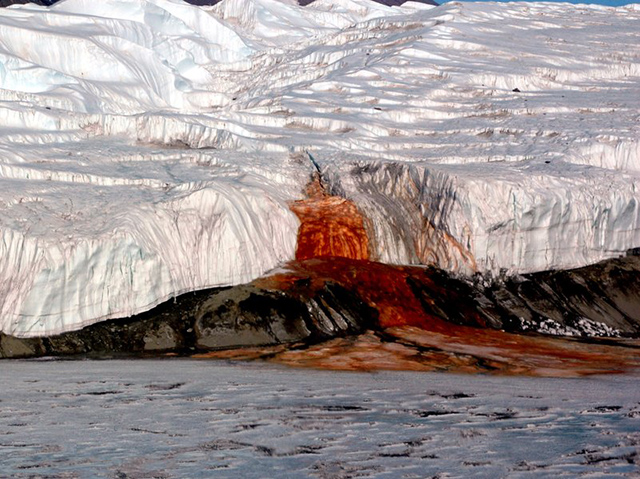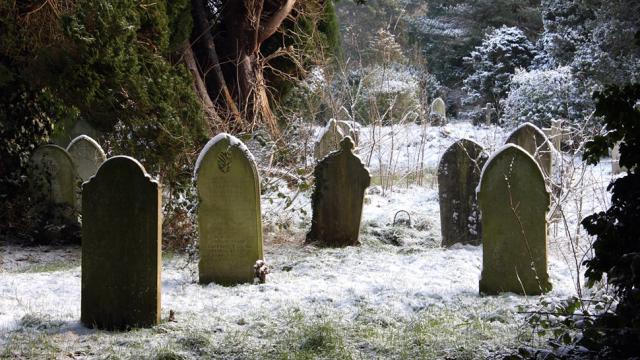In an article primarily about the potential folly of holding onto stockpiles of smallpox virus for research purposes — a now-eradicated plague that humans no longer have natural immunity to and that would very likely cause a worldwide catastrophe should it escape from the lab — the BBC includes one awesomely horrible detail. Could the frozen bodies of smallpox victims in Siberia, now thawing because of climate change, re-release the virus into the environment and thus start a global pandemic?
There has apparently been speculation about this for more than a decade. “In the past,” the BBC explains, “some researchers and news outlets speculated that smallpox in the frozen graves of former victims might remain in suspended animation, ready to begin a new cycle of infection should those bodies ever be dug up and unthawed [sic]. Scientists have attempted to excavate corpses in frozen graves in Alaska and Siberia that contain the remains of smallpox victims, however none of the bodies contained viable viruses.”
Writing for Science back in March 2002, for example, in an article straight-forwardly entitled “Is Live Smallpox Lurking in the Arctic?,” author Richard Stone describes a scene that he likens to the Blair Witch Project. It’s both stomach-turning and awesomely macabre:
Worried that spring flooding might wash the remains into inhab- ited areas — and possibly resurrect the smallpox virus — authorities in Yakutsk had summoned the team to this nightmarish place near the Kolyma River. The camera zooms in as the researchers huddle around a mummified child half-submerged in thawing mud. They gently peel away a few layers of deerskin clothing to reveal blackened skin pocked with blemishes characteristic of smallpox pustules. As they cut into a wizened leg, liquid oozes from the spongy flesh. Some minutes later they finish their work and douse the tomb with disinfectant to try to prevent anyone else from carrying smallpox out with them — accidentally or otherwise.
This terrifying possibility — a plot straight out of a future horror film — is all but immediately quashed, however, by Michael Lane of the CDC. Lane previously worked on smallpox eradication programs from 1970 to 1981 and he, for one, is not worried. “No one feels there’s a serious chance that global warming will melt the permafrost and unleash an epidemic,” he quips.
BUT: what an amazing plot possibility for a future biomedical thriller, as thawing corpses in the global north unleash waves of weird infectious terror on the people of the present day. Perhaps an oil exploration crew or a small group of archaeologists — or a few urban explorers, best friends taking a quick summer vacation to some ruined villages in the forest — find rotten body parts emerging from the mud and, unbeknownst to them, bring this virus back home to the city. It could be the plot of 28 Years Later.
Like something out of Jeff Long’s airport thriller Year Zero — in which an ancient virus is accidentally released from a vial of Jesus Christ’s own holy blood, leading to a global catastrophe — viruses once thought conquered emerge from the ice once again, virulent, unstoppable, and coming soon to a film screen near you.
Briefly, though, the BBC post coincides with an article in Smithsonian that seemed worth mentioning in this context.
The idea of long-frozen things coming back to life — or, at least, emerging once again into fresh air — was also raised last week by Smithsonian‘s look at one of my favourite stories of recent times: the blood-red “waterfall” that has emerged in Antarctica as the glacier above it melts.

Photo by Peter Rejcek, National Science Foundation
As the magazine explains, “in addition to being cut off from the rest of the continent, the water that feeds Blood Falls is completely cut off from the atmosphere — it has never seen sunlight and is completely devoid of oxygen. It’s also extremely rich in iron, which was churned into the water by glaciers scraping the bedrock below the lake.”
I mention this because, as Smithsonian puts it, “the colour of Blood Falls isn’t the only weird thing about it, however — it’s what lives inside the subglacial lake that interests scientists more than the waterfall’s creepy colour.” Here, we get into good ol’ John Carpenter territory:
Millions of years ago, when those glaciers covered the salt lakes, there were microbes living in the water, and those microbes haven’t gone anywhere, even though the water is now an extremely salty, oxygen-free bowl of complete darkness buried 400 meters under a glacier. Much like bacteria found living near deep sea thermal vents, the microbes of Blood Falls get their energy from breaking apart sulfates, which contain oxygen. After that, something eerily magical happens with the by-products — the iron in the water interacts with them to restore the sulfates, basically recycling the sulfates for the microbes to break down into oxygen over and over again.
The idea that million-year old organisms might be able to re-enter our world after a long thaw, seen in the context of the — yes — entirely speculative possibility of a global smallpox epidemic caused by melting corpses in the Arctic, only adds to the awesome fictional possibilities here, dreaming up strange tales of long-dormant organisms and the frozen landscapes that hold them suddenly exhibiting malicious influence on human history. [BBC — via @nicolatwilley — and Smithsonian]
Lead image by Jane Rix/Shutterstock
